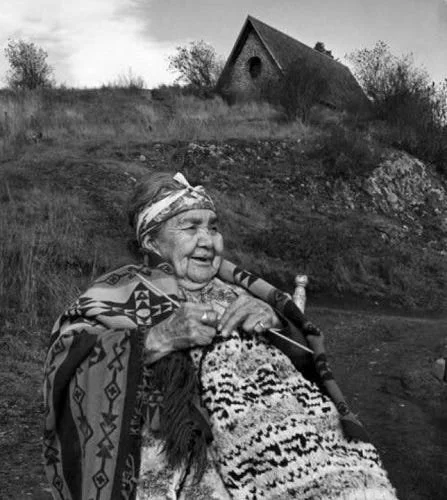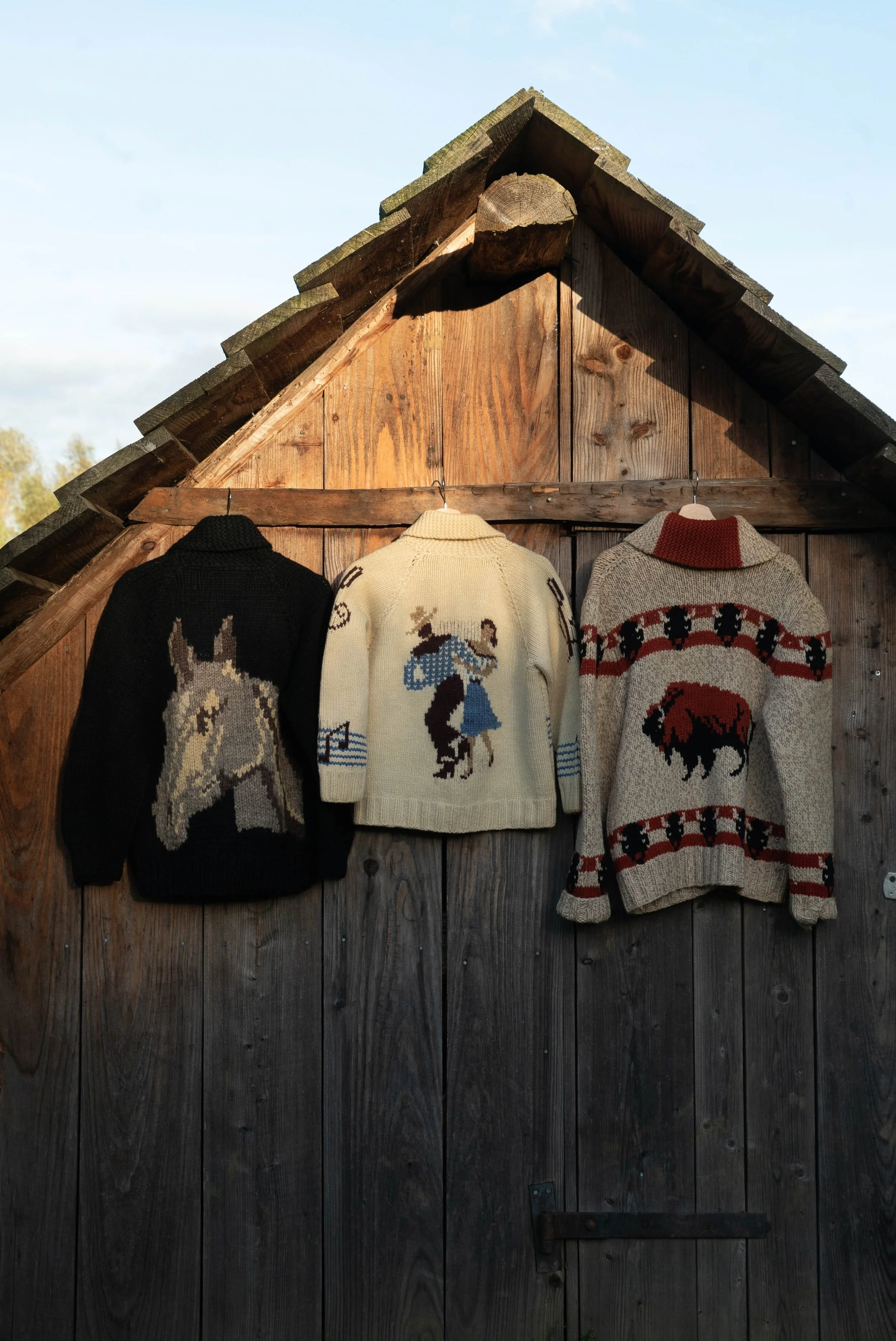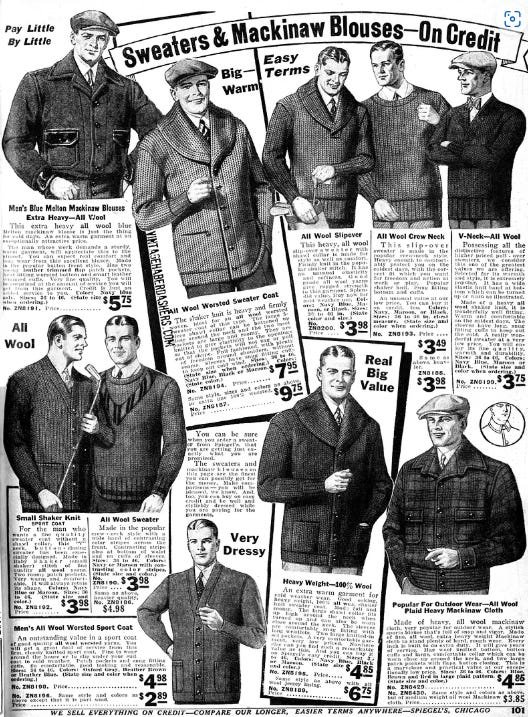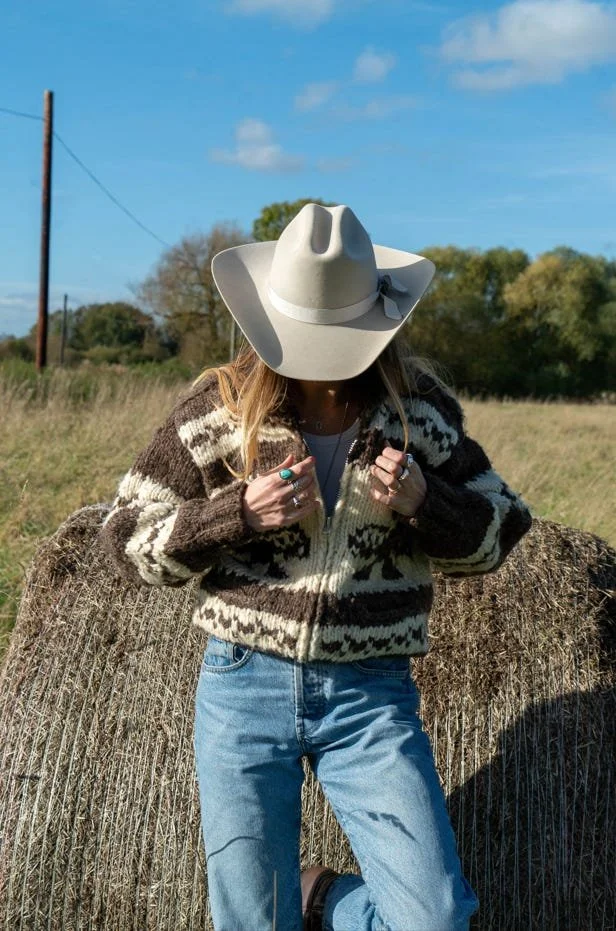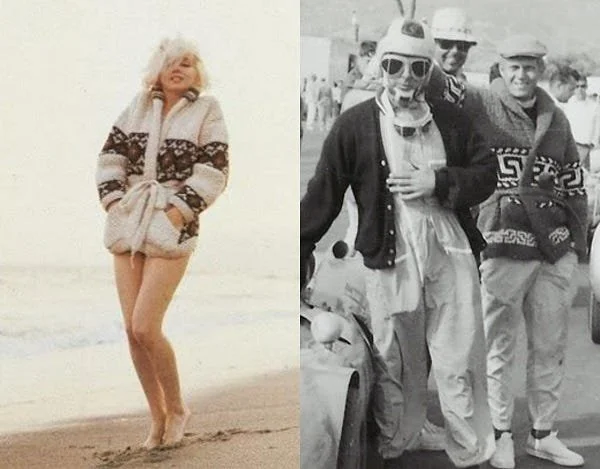Everyone wants a Cowichan in winter
Okay, but what are Cowichan sweaters?
Thick, soft, warm, and, most importantly for some, depicting novelty or animal-based scenes, Cowichan and Cowichan-style sweaters float the Internet vintage shops and auction sites during winter, with some rarer models reaching astronomical prices. As the term 'Cowichan' is thrown around a lot, and it's officially sweater weather, here's all you need to know about what they are and why they carry so much cultural and historical value.
A history of original Cowichan sweaters
Cowichan knitting dates back to the mid-19th century when Indigenous Coast Salish women in British Columbia began adapting European-style knitting techniques. Previously occupied with producing woven blankets made of goat and dog hair (a common trade item), they picked up knitting instead as the demand dropped, and maintaining a steady hair supply became challenging. It's not known for sure how knitting emerged among the Coast Salish, but the most common theory suggests that a Shetland Island immigrant, Jeremina Colvin, had taught Indigenous women how to knit in the late 1880s.
Indian Sweater Making by The Charlie Family. 1946. Image I-27571, source: Royal BC Museum and Archives.
The earliest record of the Cowichan sweater is from the early 1900s; during this time, only Coast Salish people wore the sweaters. But already, in the 1920s, the sweaters attracted the attention of outsiders, with Indian agents selling them across the country. By the 1930s, knitting was taught in schools.
"The increased business with the sweater has been of great assistance to the welfare of the Indians themselves, and in this way [is] of indirect benefit to the Dominion Government."
-H. Graham, a Cowichan Indian agent, The Cowichan Leader, 1934.
By the 1940s, Cowichan sweaters started to gain popularity across North America, with demand extending to the US, appearing in tourist destinations like California, Washington State, and Oregon.
Coast Salish member Mrs. Johnny Bear wearing traditional dress while she knits a Cowichan sweater in 1964
The history of Cowichan-style cardigans
With all things Cowboys & Indians in the 50s, it was natural for Cowichan sweaters to be adapted and reimagined in the US, matching current trends and demand. Mary Maxim, a craft and needlework mail-order company founded in Michigan, was one to capitalise on the sweaters. The classic bulky-weight cardigan patterns based on the Cowichan sweater quickly became the best-known Mary Maxim product ever. Though they didn’t replicate the exact patterns or the craftsmanship, they captured the general look and feel of the original Cowichan, featuring oversized, chunky knits and rugged, nature-inspired designs.
The first pattern they created was a reindeer one (fun fact- they still sell it today), but as its popularity dropped, they came up with 'modern' patterns - depicting sports, professions or popular pastimes. It wasn't about reinventing the wheel; chunky cardigans with shawl collars had been a popular item since the 1930s, but as the mid-century love for kitsch and novelty grew, adding those quirky motifs turned out to be a success.
1930s Spiegel Catalog
Cowichan sweters today
Today, the term "Cowichan sweater" is closely tied to the Cowichan people of Vancouver Island, and true Cowichan sweaters are still made exclusively by them. In response to cultural appropriation, the Cowichan Tribes formally registered trademarks for the terms "Cowichan," "Genuine Cowichan," and "Genuine Cowichan Approved" in 1997 as a legal protection to preserve their cultural integrity and traditions.
If you're looking to buy a genuine piece, look for those trademarks, as they will most likely be highlighted on the tag, alongside the details such as the maker’s name or the community where the sweater was crafted.
Style, colours, and wool in Cowichan sweaters: originals vs. replicas
Original Cowichan sweaters
Authentic Cowichan sweaters are fluffy, coarse and really chunky - they can weigh up to 2 kg. They're handknitted from locally sourced and undyed wool and have a loose, oversized fit with thick ribbing, often including high necks and buttoned fronts, zips or pull-over styles. Traditional patterns are inspired by nature, including motifs such as eagles, thunderbirds, salmons, and geometric shapes made in an earthy and muted colour palette.
Cowichan-style sweaters and cardigans
They are obviously different from the original sweaters but often have many similar characteristics, like fit, thickness of wool, and patterns. There are many thunderbird and eagle cardigans that have not been made by the Cowichans. But it's relatively easy to tell the difference, even if you're not an expert - authentic Cowichan sweaters are heavier and have this unique, imperfect look.
Knitting pattern for Cowichan sweater replica
Marilyn Monroe and Steve McQueen in Cowichan replicas, 1960s
Buying vintage cardigans - what to keep in mind
Regardless of the style, there are a few things to keep in mind when buying a vintage cardigan, especially if you're willing to pay a three-digit price.
Check its condition - whether you're looking at the item in front of you or checking it online, inspect its condition thoroughly. With handknitted second-hand or vintage items reaching even 60 years (or more, if you're lucky!), there is a chance wool will start showing signs of wear, like pulls, snags or moth holes, or it might be felted or matted - which is a result of improper washing. Yes, though these are heavy AF, they should only be hand-washed (remember when I said they could weigh up to 2 kg? With contact with water, you'll get your shoulders really worked out!).
Inspect the buttons or zips - these can help date the sweater if the tag isn't present.
Compare its measurements with a similar item you own - thick wool will wrap your body in a different way than a silk shirt does, so don't only rely on the size tag.
Smell the sweater or ask your online vintage seller if they washed it - do I need to explain this one?
Don't get discouraged by flairs - especially with vintage items, there is a big chance these sweaters will be imperfect - but trust me, almost everything can be repaired if you're patient enough (or have a good alterations shop that can handle it). Daring holes and pulls is such a therapeutic thing to do (I remember the times my mum would fix my socks until there was really nothing to fix anymore; this is how old I am). Plus, folks, we really need to get back into the habit of repairs - it's a sexy skill!



